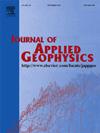Depth estimation of pre-Kalahari basement in Southern Angola using seismic noise measurements and drill-hole data
Abstract
The remote Southern region of Angola is covered by siliciclastic Kalahari Cenozoic formations that host underground aquifers of great importance to local populations affected by water scarcity problems. These aquifers are well developed where Kalahari sands reach appropriate thicknesses. On the other hand, at the eastern end of this area, regional aeromagnetic data recently acquired suggested the possibility of the continuity of the geological structures of the Lufilian Arc, sited in the nearby Zambia and Congo, southwestwards into Angola under the Kalahari formations. Once the Lufilian Arc is associated with the presence of the so-called Central African Copperbelt, this possibility increased the interest in determining the depth to Pan-African rocks under the Kalahari basin. To estimate the thickness of Kalahari formations in this area of difficult access and poor logistics, an expedited and non-invasive geophysical method was needed. Seismic noise and the single-station Nakamura technique were chosen, but due to the large distance of the study area from the ocean, one of the major sources of seismic noise, a test survey was acquired in the Cuvelai region to assess the signal quality, where the data was calibrated using available drill-holes. >170 points of seismic ambient noise were later acquired and the horizontal/vertical (HVSR) amplitude versus frequency curves were 1D inverted for the best velocity/density model for each station. The results were compared with 1D inverted legacy vertical electrical soundings reprocessed and validated in this work, showing similar depth-to-basement, while interpreted velocities/densities of geological formations were sampled and confirmed with measurements. A depth-to-basement map was produced using seismic information, mechanical soundings, and geological information. Despite the relatively reduced geographical area covered, the map presents valuable information for hydrogeology and mineral exploration purposes and agrees with a previously available coarser map of Kalahari thickness and with observations from geological surveys simultaneously conducted at the time of the seismic surveys.

 求助内容:
求助内容: 应助结果提醒方式:
应助结果提醒方式:


